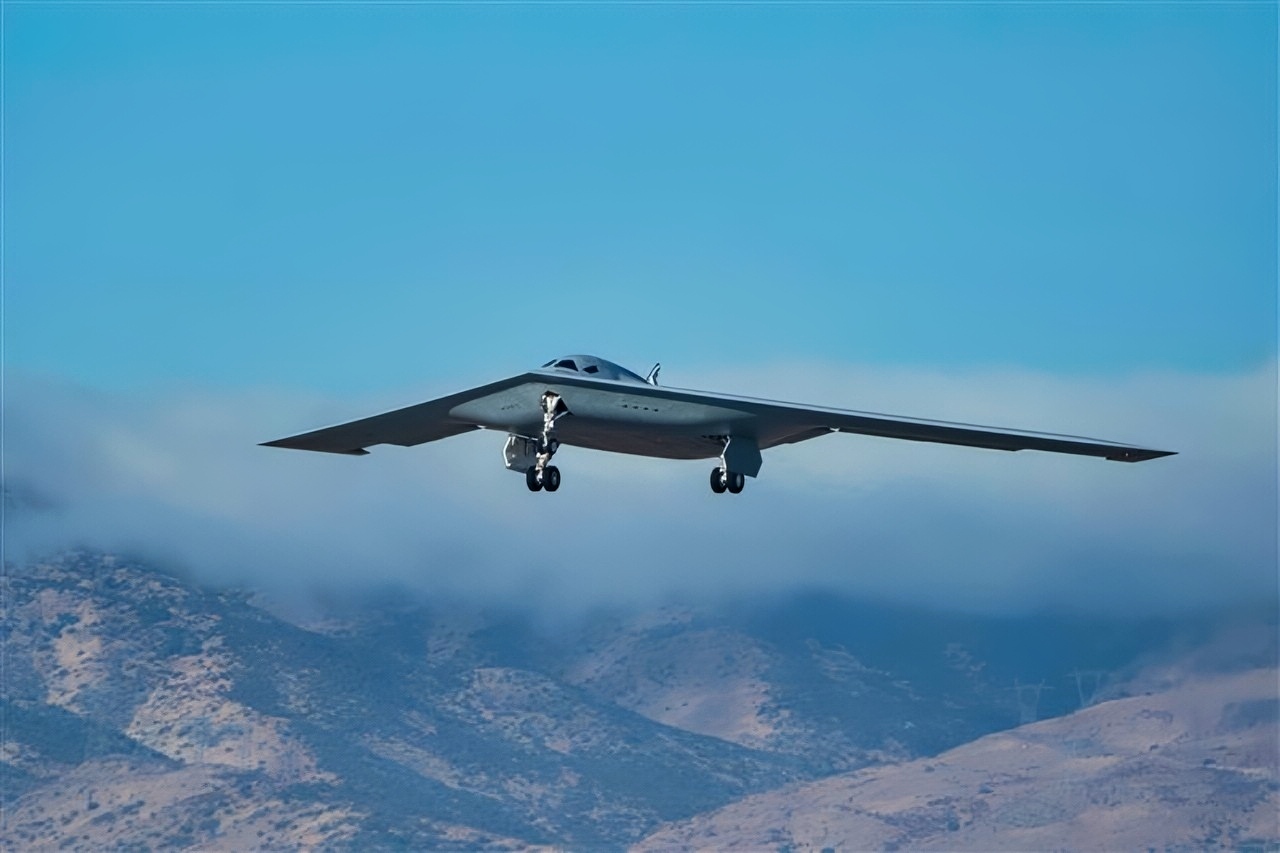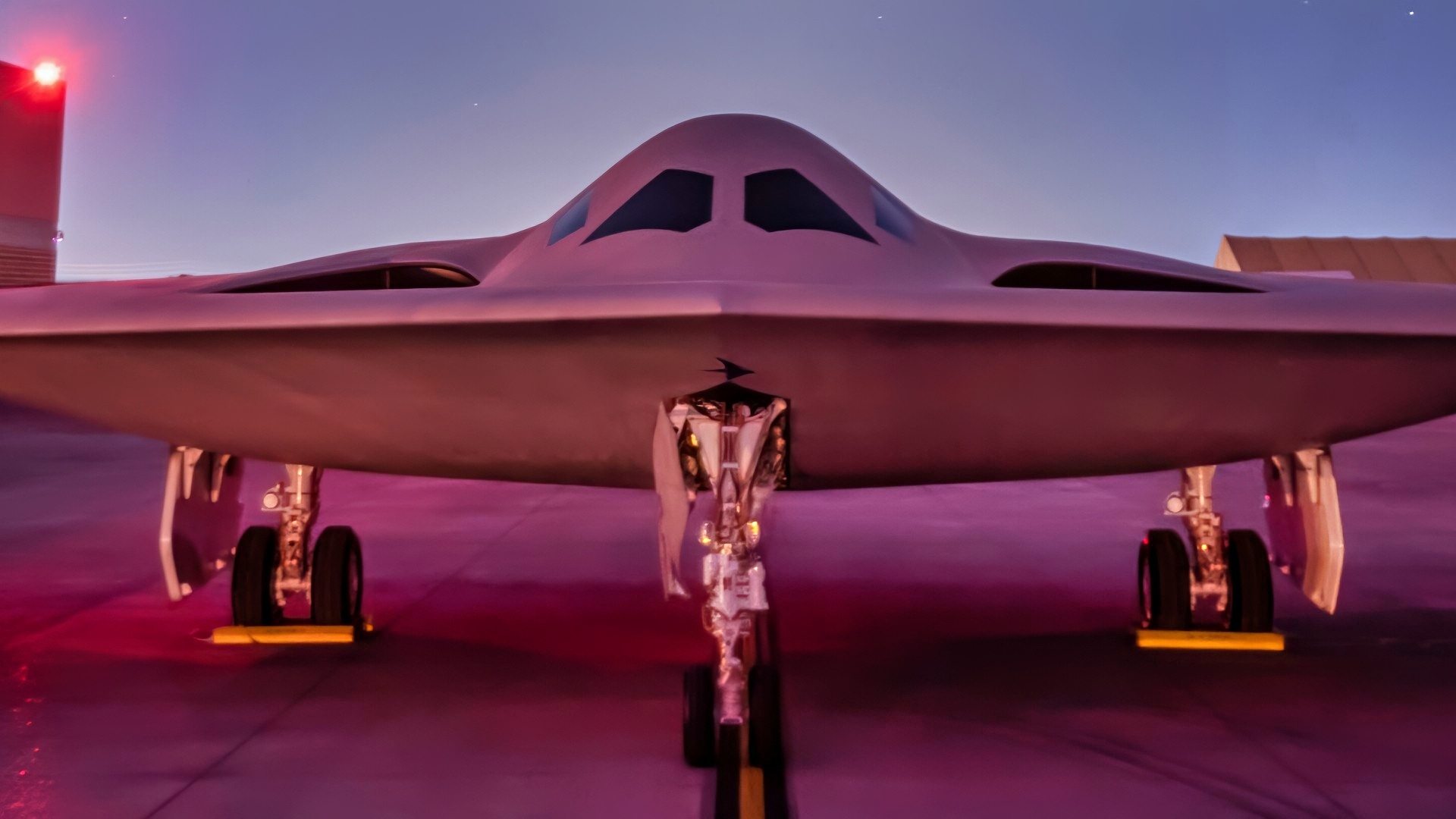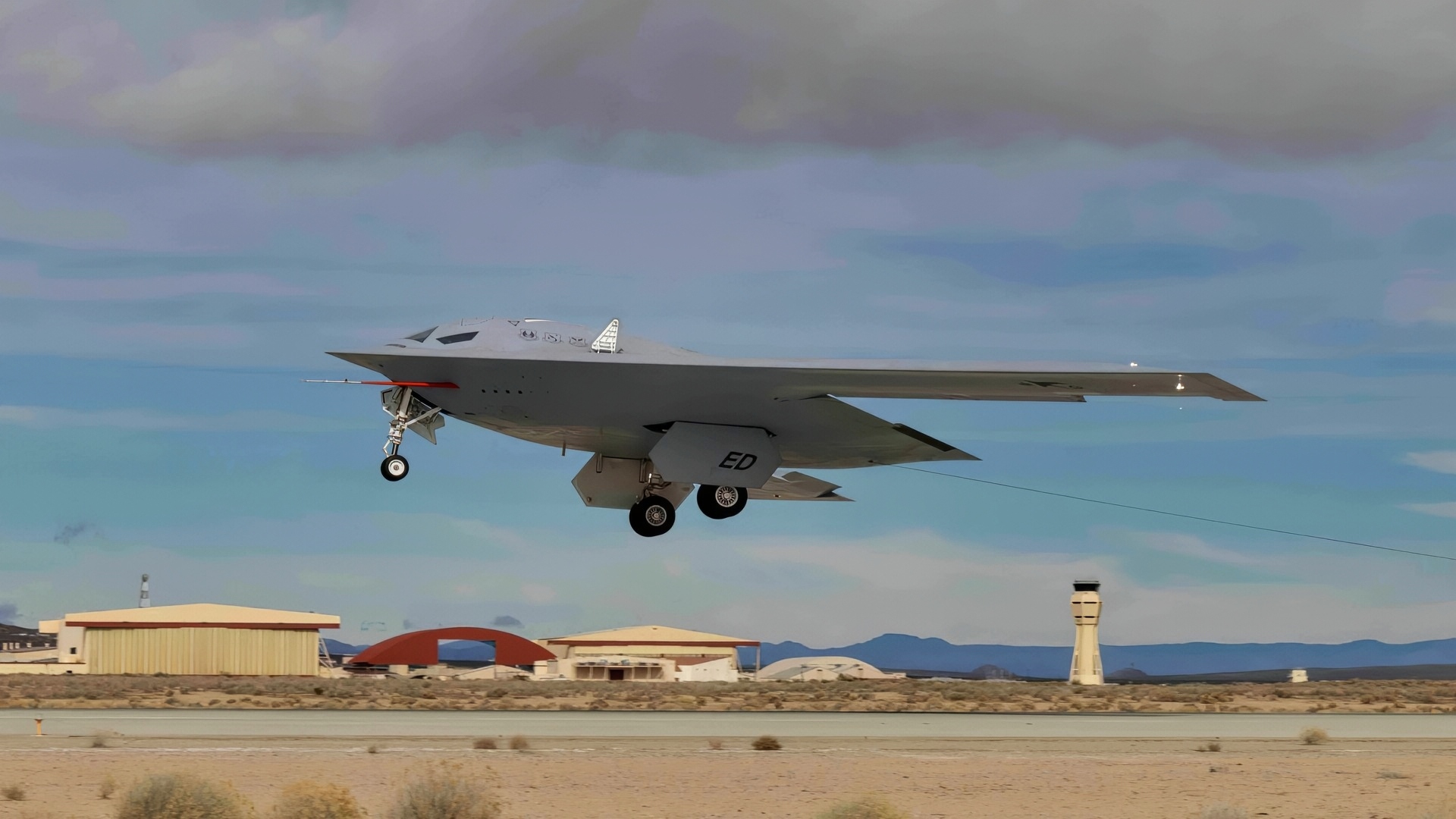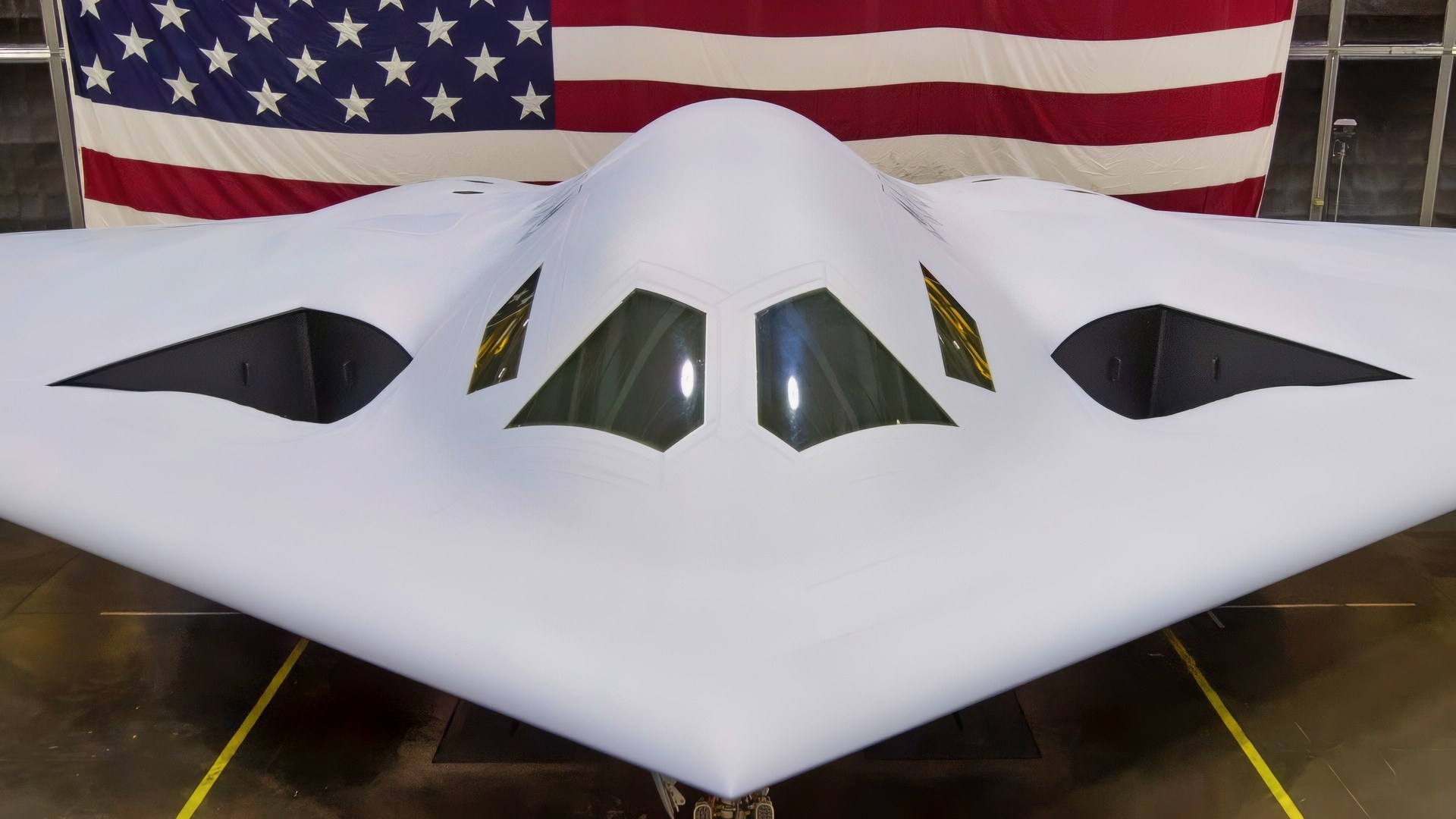Key Points and Summary – Beyond stealth, the B-21 Raider’s edge is its brain. A modular, open-architecture avionics suite fuses radar, EO/IR and ESM, uses AI decision aids, and links seamlessly to JADC2, letting crews retask in flight and control loyal-wingman drones.
-Cyber-hardened EW systems jam and deceive while protecting the jet.

U.S. Air Force Airmen with the 912th Aircraft Maintenance Squadron prepare to recover the second B-21 Raider to arrive for test and evaluation at Edwards AFB, Calif., Sept. 11, 2025. The arrival of a second test aircraft provides maintainers valuable hands-on experience with tools, data and processes that will support future operational squadrons. (U.S Air Force photo by Kyle Brasier)

A second B-21 Raider, the nation’s sixth-generation stealth bomber, joins flight testing at Edwards Air Force Base, Calif., Sept. 11. The program is a cornerstone of the Department of the Air Force’s nuclear modernization strategy, designed to deliver both conventional and nuclear payloads. (Courtesy photo)
-As a gateway between legacy and next-gen forces, the Raider coordinates strikes and passes data across air, land, sea, space and cyber.
-It carries B61-13 and LRSO, plus JDAM, MOP and future hypersonics. Now in low-rate production after 2023 first flight, B-21s will replace B-2/B-1 and partner with B-52J through 2030s and beyond.
B-21 Raider: The Networked Bomber Built to Outthink Air Defenses
The B-21 Raider is the newest strategic bomber in the U.S. inventory, and by far the most advanced. Built using lessons learned from the B-2 Spirit, the B-21 is often described as a quantum leap in stealth technology. It features a flying-wing layout largely similar to the B-2, but it reportedly incorporates better stealth shaping, better Radar Absorbing Material coatings, and better Electronic Warfare systems to improve its survivability.
Because of analysts’ focus on the Raider’s stealth attributes, the B-21’s avionics and data link systems get far less attention. But these sophisticated systems turn the B-21 from just another bomber into a flying battle management platform.
The B-21’s Impressive Avionics
One of the most revolutionary aspects of the B-21 is its open systems architecture. The open-systems approach allows rapid integration of new technologies, weapons, and mission systems without requiring a complete redesign.

The B-21 Raider was unveiled to the public at a ceremony December 2, 2022 in Palmdale, Calif. Designed to operate in tomorrow’s high-end threat environment, the B-21 will play a critical role in ensuring America’s enduring airpower capability. (U.S. Air Force photo)

A B-21 Raider conducts flight tests, which includes ground testing, taxiing, and flying operations, at Edwards Air Force Base, California, where it continues to make progress toward becoming the backbone of the U.S. Air Force bomber fleet. The B-21 will possess the range, access, and payload to penetrate the most highly-contested threat environments and hold any target around the globe at risk. The B-21 program is on track to deliver aircraft in the mid-2020s to Ellsworth Air Force Base, South Dakota, which will be the first B-21 main operating base and location for the B-21 formal training unit. (Courtesy photo)
It ensures an aircraft can evolve as quickly as threats change, reducing lifecycle costs and maintaining technological superiority. This modularity is critical for avionics and battle management systems. Software, sensors, and communication links can be upgraded as new capabilities emerge.
The B-21 Raider’s avionics suite is designed to support multi-domain operations, thereby making it far more than a traditional bomber. Its flight control system uses advanced fly-by-wire technology to provide precise handling of the aircraft, enhancing stability and maneuverability. Navigation combines GPS with inertial systems. This ensures accurate positioning even in GPS-denied environments, while terrain-following radar enables low-level penetration missions without compromising stealth.
More Than Just a Bomber
Sensor fusion is another defining feature of the B-21’s avionics. The aircraft integrates data from onboard sensors and external sources into a single picture for the crew. Active and passive radar systems are optimized for low observability; electro-optical and infrared sensors for target identification and tracking; and electronic support measures detect and fix enemy emitters.
Artificial intelligence is a big part of these systems.
Autonomous decision aids help provide threat analysis, route planning, and dynamic mission updates. Human-machine teaming is also central to the design, allowing the B-21 to control unmanned systems such as loyal-wingman drones directly from the cockpit. The Raider, therefore, acts as a command-and-control node in contested environments.
All of these systems come together to transform the B-21 from a mere bomber to a flying battle management platform. Its systems are designed to integrate seamlessly into the Joint All-Domain Command and Control framework, enabling real-time coordination across air, land, sea, space, and cyber domains.
Advanced networking capabilities allow the aircraft to maintain secure, high-bandwidth communications with other aircraft, satellites, and ground stations. Acting as a gateway between legacy platforms and next-generation systems, the B-21 ensures interoperability across the battlespace. Cloud-based mission data supports dynamic retasking and information-sharing during flight.
Why the USAF Wants the B-21
EW and cyber resilience are integral to the B-21’s battle management systems. The aircraft can conduct electronic attacks to jam or deceive enemy radars and communications, vastly improving the Raider’s survivability in contested environments.
Its cyber-hardened architecture protects avionics and mission systems from intrusion—a critical requirement in modern warfare. AI-driven battle management capabilities enable real-time threat assessment, processing sensor data to prioritize targets and recommend optimal weapon employment. The B-21 can also direct unmanned aerial systems for reconnaissance, electronic attack, or strike missions, multiplying its effectiveness on the battlefield.
Weapons integration is tightly linked to the avionics and battle management systems. The B-21 is nuclear-capable, designed to carry the B61 Mod 13 nuclear bomb and the Long Range Stand Off missile. For conventional missions, the Raider can deploy Joint Direct Attack Munitions, the Massive Ordnance Penetrator, and future hypersonic weapons.
Its open architecture ensures rapid integration of emerging technologies, including directed-energy weapons and advanced cruise missiles, without requiring major redesigns.
The B-21’s Radar Absorbing Materials and smooth blended-wing design minimize radar cross-section, while thermal management systems reduce its infrared signature. Electronic countermeasures integrated into its avionics provide active defense against detection and targeting, ensuring the aircraft can operate in the most heavily defended airspaces.
Where is the B-21 Now?
Currently, the B-21 is in low-rate initial production as its final flight trials are underway. The aircraft first took flight in 2023, making it one of the first sixth-generation aircraft to publicly take flight.
It is expected to be operational by the 2030s, when it will replace older B-2s, as well as B-1 Lancers. Officially, the U.S. Air Force plans to procure about 100 B-21s, although the number might change in the future.
Once operational, the B-21 Raider will form the backbone of the U.S. bomber fleet alongside the B-52J Stratofortress. Its ability to operate in environments marked by high-end threats, deliver precision strikes, and manage multi-domain operations makes it indispensable for deterrence against nuclear peers, rapid global strike in response to emerging threats, and joint operations with fighters, drones, and naval assets.
Analysts predict that a fleet of more than 225 B-21s would be necessary to maintain U.S. air dominance and strategic deterrence in the face of growing challenges from China and Russia.
About the Author: Isaac Seitz
Isaac Seitz, a Defense Columnist, graduated from Patrick Henry College’s Strategic Intelligence and National Security program. He has also studied Russian at Middlebury Language Schools and has worked as an intelligence Analyst in the private sector.
More Military
The ‘Super’ B-52H Stratofortress Bomber Is Already Flying
‘Go Home’: Stealth F-22 Raptor Flew Right Under Iranian F-4 Phantom Undetected
Russia’s ‘New’ PAK DA Stealth Bomber Has a Message for Every Military On Earth
China’s New H-20 Stealth Bomber Has a Message for Any Military on Earth
Mach 2 F-4 Phantom II Fighter Has a Message for Every Air Force on Earth










